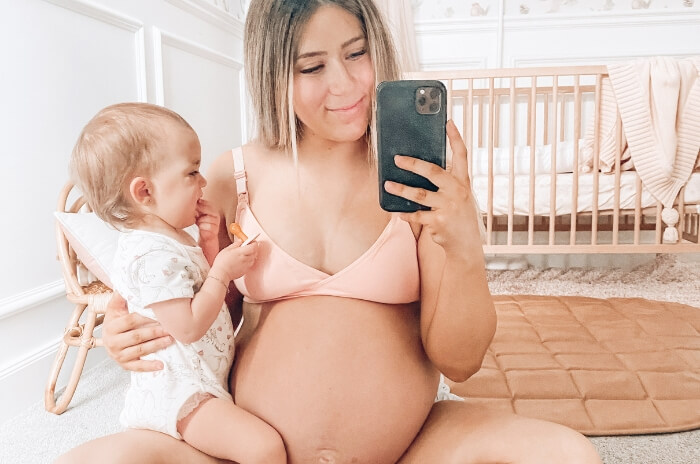
@theorganisedmama_ in our Dakota Bra
Just like pregnancies, no two bodies are the same - and neither are two pairs of breasts. For some of us, we don’t even have two breasts the same within our own pair!
We know that it’s a topic that can cause concern for some women, so we’re here to talk all things breasts - and hopefully set your mind at ease.
Breast Size and Shape, Postpartum
One of the things we hear most from women who are pregnant for the first time or have just had a baby, is that they ‘knew’ their breasts would change, but they didn’t know just how much their breasts would change.
It can be a bit of a shock, particularly if you’ve always had breasts on the smaller, perkier size!
Many of the changes you’ll experience during pregnancy and lactation will be perfectly normal, but do keep an eye out for any of the symptoms below. Often, there’s nothing to worry about, but it’s best to be safe and get your breasts checked out if you have:
- ‘Orange peel’ like dimpling of the skin on the breast
- Swelling, redness or tenderness that occurs when your breasts are not engorged
- Any type of discharge from the nipple, independent of lactation
- Heaviness, pain or burning in the breast.
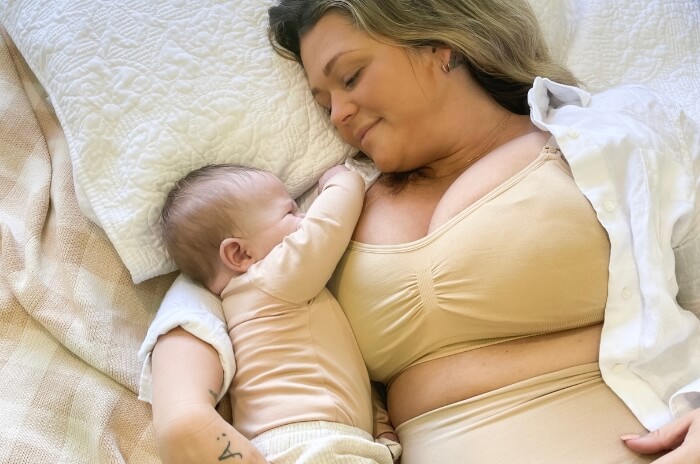
@reign.and.dash in our Stella pumping bra
Different Breast Shapes
The breasts you developed during puberty may not be the breasts you have on the other side of having a baby. And that’s ok! Knowing your breast shape can help you identify changes, so it can be helpful to know which type you have.
Athletic or relaxed
If your breasts are on the smaller side, with less fatty deposits, they’re likely to be an athletic or relaxed type.
Asymmetrical
If you have one breast significantly larger than the other, you’re not alone! Many women have this breast type, which is often simply due to differing amounts of glandular tissue.

@yumika_thorne in our compression socks
Bell
Typically seen in larger breasts (although not always), bell-shaped breasts have thinner tissue towards the centre of the chest, with thicker tissue towards the bottom and outside edge. This may cause the tissue to stretch, causing a ‘drooping’ effect.
East-West
East-West breasts refer to the direction of the nipples, which point - you guessed it - East to West, or outward from the midline of the chest.
Wide Spacing
Similar to East-West breasts, wide spacing breast shapes have a wider space between the breasts and the midline of the chest. The difference here is that the nipples still point fairly straight, as opposed to outwards.
Conical
Quite common in smaller breasts, the conical breast shape is characterised by an ‘everted nipple’, which creates a cone shape.
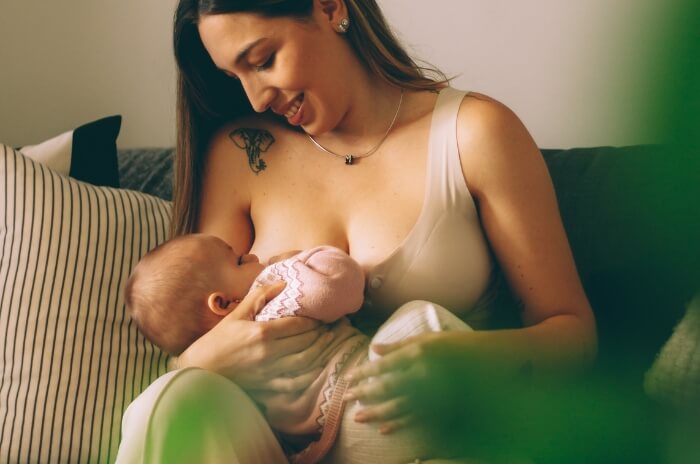
@barbarabritobgb in our Amaya Sleep Bra
What are the Factors Affecting your Breast Shape and Size
There are a number of factors that determine your breast shape and size. Some are hormonal, some are due to lifestyle, and some are passed down from generation to generation.
Genetics certainly play a role in determining the shape and size of your breasts during pregnancy and lactation, but there are a few other factors involved.
- Weight gain or loss, and how suddenly it occurs;
- Whether you’re breastfeeding (and if you’re breastfeeding multiple babies at once!);
- Your age
- Mastitis
- Hormonal changes such as Polycystic Ovarian Syndrome, or PCOS.
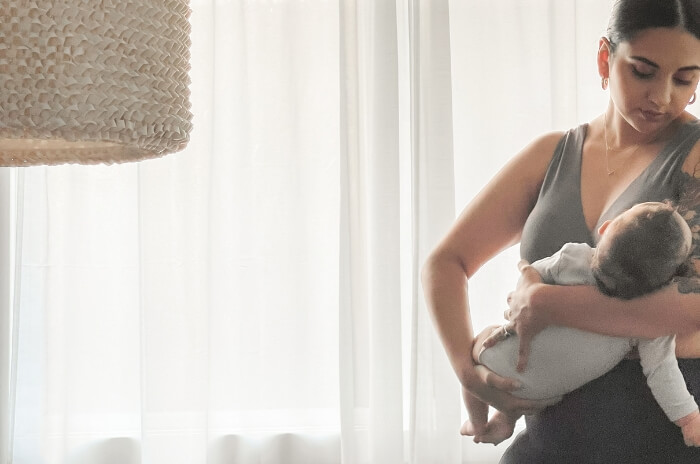
@casadecrow in our Sara Sleep Bra
Blood Volume Increase
In the early stages of pregnancy, your blood volume increases significantly - around 40%! This increase is required in order to increase the blood flow to essential organs, such as your liver and kidneys - not to mention, to the tiny growing human in your uterus! As such, many women report seeing an increase in their breast size long before they start to see their bump develop.
Rising Oestrogen Levels
Oestrogen is produced by the ovaries, and in the placenta in pregnant women. It not only maintains the integrity of the uterine lining and triggers the development of your baby’s organs through hormone signalling, it also regulates other key hormones and - as you may have guessed - can cause your breasts to grow. Just as we develop breasts at the onset of puberty when we have a surge in oestrogen, so too do we often see an increase in breast size in the first trimester.
A rapid increase in oestrogen can cause the breasts to grow quickly, stretching out the skin and muscle tissue. In some cases, you may see your breasts take on a completely new shape as a result.
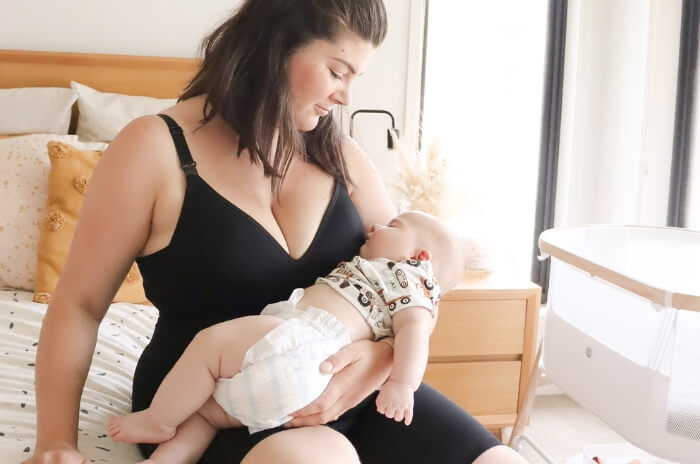
@mumlife.emma.may in our Harper Bra
Producing Colostrum
If you choose to breastfeed, colostrum is the first nutrient-rich form of milk your breasts will produce; although you may experience leaking at any point during your pregnancy. This is perfectly normal, and so is not experiencing colostrum leakage. Every woman’s experience is different, although as you do begin to produce colostrum, your breasts may get bigger as a result.
Ready To Give Birth
By the time you’re ready to give birth, the glandular tissue in your breasts will have increased in preparation for making milk (also known as lactogenesis). You’ll also notice that your areolas have probably darkened in the lead up to labour. This is natural, and it has a biological purpose! Darker areolas act as a ‘target’ for babies, as their eyes only pick up the contrast between light and dark for the first couple of weeks of life.
Breastfeeding
During breastfeeding, your breasts will initially swell as engorgement (when your milk comes in) occurs, and are likely to decrease in size at around the 6 week mark. Once you finish breastfeeding, you can expect your breasts to decrease in size again.
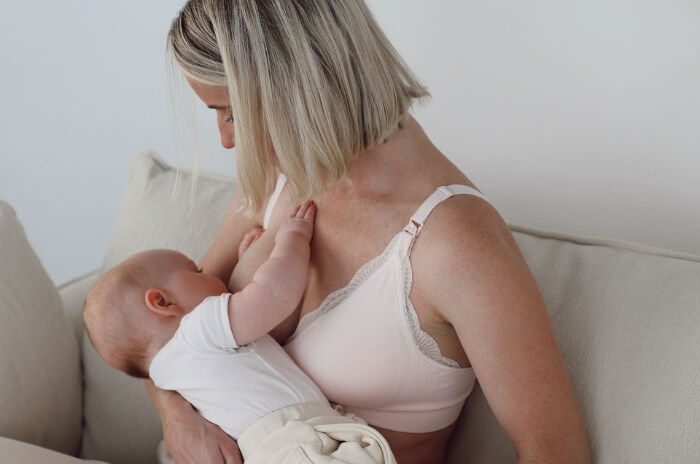
@haileyhavana in our Karla Bra
How To Support Your Breasts After Pregnancy
After pregnancy, your breasts are going to require additional support (and possibly a little leak protection!). We know that it can be overwhelming to know which products will work for you, so we’ve included our suggestions for each breast shape.
Support Tops
During the postpartum period, you don’t just need support for your breasts. You may find that your core may benefit from some light compression and support, too. This is where support tops can come in handy. We find that a lot of second- or third-time Mums order support tops after they’ve realised with their first pregnancy that they prefer a little extra support.
First time mamas, you can skip the learning curve and head straight over to the postnatal support tops section of our website to make sure you’re fully supported from Day One!
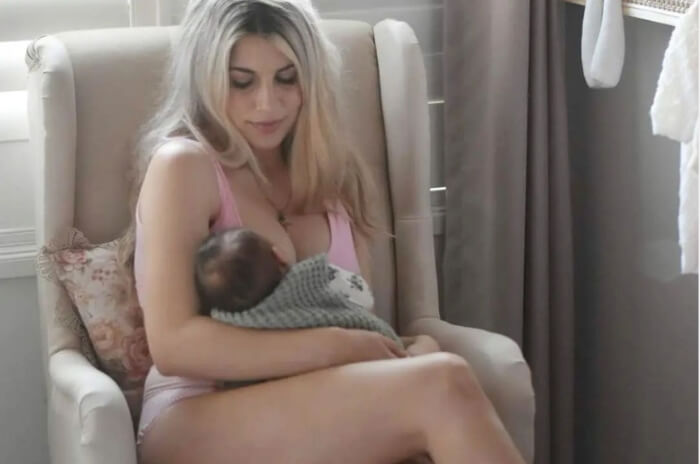
@pebz67 in our Embrace Sleep Bra
Breastfeeding Bras
The Holy Grail of post-pregnancy pieces, a good breastfeeding bra is like GOLD to a new Mum. You’ll find our entire range of breastfeeding bras on this page of our website, but here are a few of our favourites:
For our East-West ladies, the Amora Tonal Lace Trim Bra is perfect for bringing your breasts back towards the midline of your chest, without uncomfortable wires digging into your sensitive skin.
If you have wide-spacing breasts, the Leona Seamless Nursing Bra features a ribbed knitted underbust band and contour support panels to provide optimal support.
For those worried about sagging, the Della Nursing Bra is designed to support the Cooper ligaments from both the sides and from below to maintain your bust shape.
Massage Oil
If you’re one of the many women who developed stretch marks on her breasts during pregnancy, you’re not alone! They’re more common than you may think, and should fade with time. We recommend Weleda Stretch Mark Massage Oil, as this is a beautiful product to nourish and repair the skin.
And finally, the product we recommend for ALL breast shapes: Breast Pads.
Because there’s nothing more embarrassing than springing a leak at an inopportune moment, and these will protect your dignity - and your clothing! If you’re putting together a hamper for a new mama, we highly recommend slipping a pack in - she’ll love you for it!
Finally... Don’t Panic!
Pregnancy is a weird and wonderful time, and - we’re just going to say it - boobs can be weird!
If you’re concerned about the size, shape, look, feel or any discharge you may be experiencing, have a chat with your doctor or healthcare provider. We guarantee they’ve heard - and seen - it all before. The important thing is that you feel supported, emotionally and physically.
And if you’re a small-chested lady who has a C, D or even an E cup, for the first time ever? Enjoy it, Mama! You may be surprised at how much you appreciate your smaller breast size if and when they return to normal.
